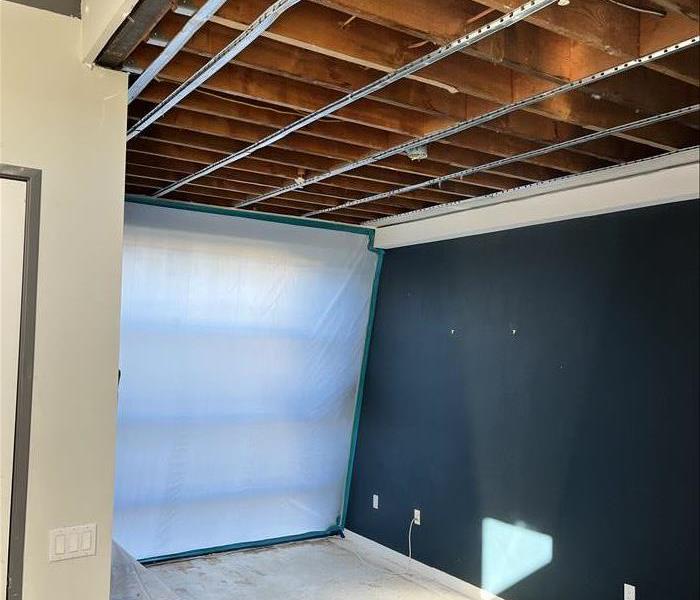Understanding the Limitations of DIY Water Damage Restoration
4/23/2024 (Permalink)
Water damage in your home can be a stressful and overwhelming experience. Whether it's from a burst pipe, a leaking roof, or a natural disaster, dealing with the aftermath requires immediate and effective action to prevent further damage and mold growth. While the temptation to tackle water damage restoration on your own may be strong, it's essential to understand the limitations of the do-it-yourself approach.
Identifying the Scope of the Damage
One of the biggest challenges with DIY water damage restoration is accurately assessing the extent of the damage. Water can seep into hidden areas such as wall cavities, underflooring, and behind cabinets, causing unseen structural damage and promoting mold growth. Without proper equipment and expertise, it's easy to underestimate the scope of the damage and overlook critical areas that require attention.
Lack of Specialized Equipment
Another limitation of DIY water damage restoration is the lack of specialized equipment required for thorough drying and restoration. Professional water damage restoration companies like SERVPRO® have access to advanced tools such as industrial-grade dehumidifiers, air movers, and moisture meters, which are essential for drying out affected areas effectively. Attempting to use household fans and dehumidifiers may not be sufficient enough to remove moisture hidden within walls and flooring, leading to lingering dampness and mold growth.
Risk of Incomplete Restoration
Incomplete restoration is a common issue with DIY water damage cleanup efforts. Without proper training and experience, it's challenging to ensure that all affected materials are properly dried and restored. Moisture trapped within walls, floors, and ceilings can lead to structural damage over time, as well as mold growth. Professional restoration technicians have the expertise to assess the extent of the damage, develop a comprehensive restoration plan, and ensure that all affected areas are thoroughly dried and treated to prevent future problems.
Time and Energy Investment
DIY water damage restoration can be a time-consuming and physically demanding process. From extracting water and removing damaged materials to drying out affected areas and sanitizing surfaces, the restoration process requires meticulous attention to detail and significant effort. For homeowners with busy schedules or limited physical capabilities, DIY restoration may not be a practical or feasible option.
Cost Considerations
While DIY water damage restoration may seem like a cost-effective solution initially, it's essential to consider the potential long-term costs of incomplete or ineffective restoration. Mold growth, structural damage, and ongoing moisture issues can result in expensive repairs and renovations down the line. In contrast, professional restoration services may save you time, money, and hassle by ensuring that the job is done right the first time.
While DIY projects can be rewarding, water damage restoration is best left to the professionals. By understanding the limitations of the DIY approach and investing in professional restoration services, homeowners can ensure that their property is properly restored and protected from future damage. If you're dealing with water damage in your home, don't hesitate to contact SERVPRO of Fort Collins for expert assistance and peace of mind.






 24/7 Emergency Service
24/7 Emergency Service